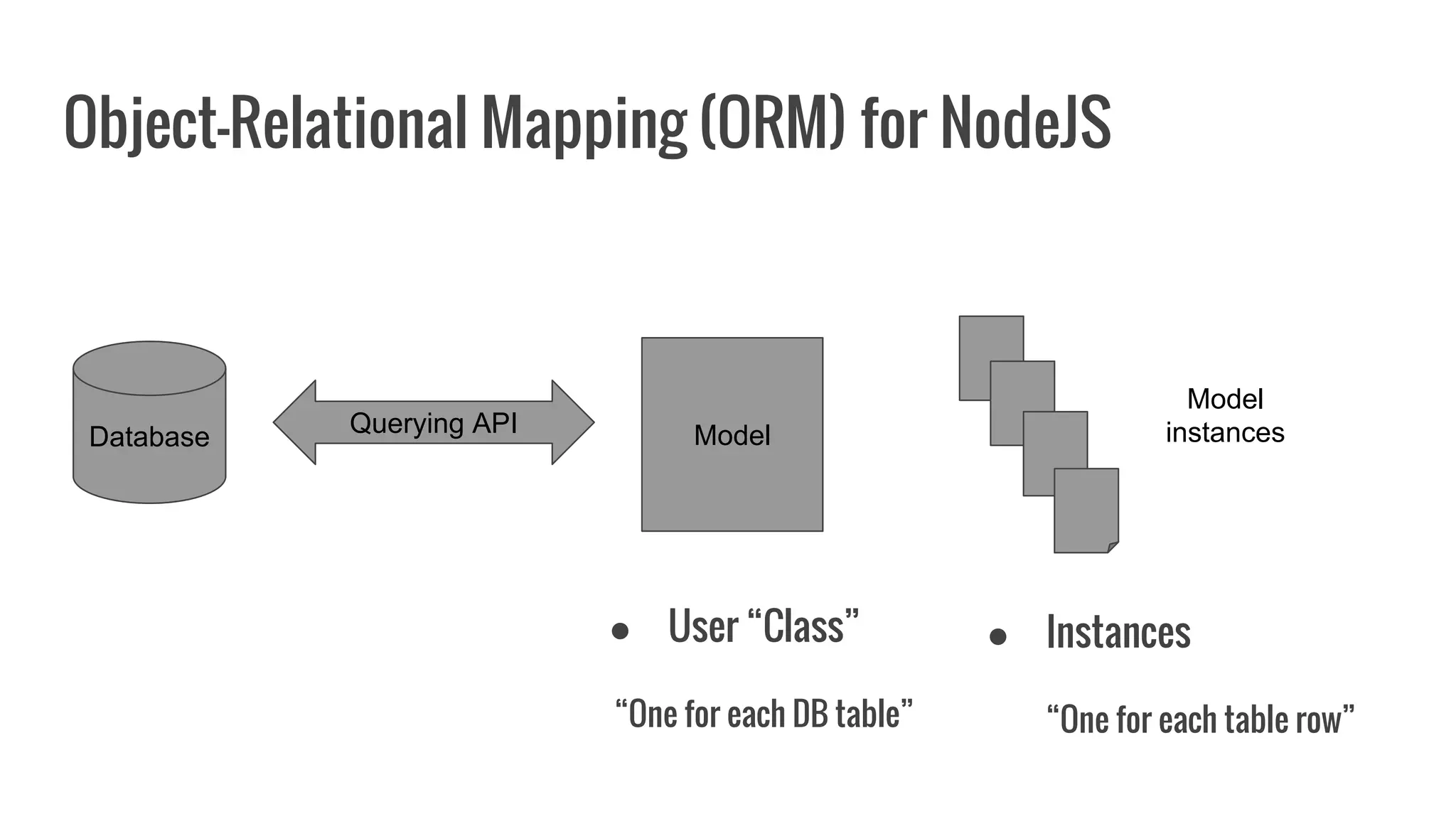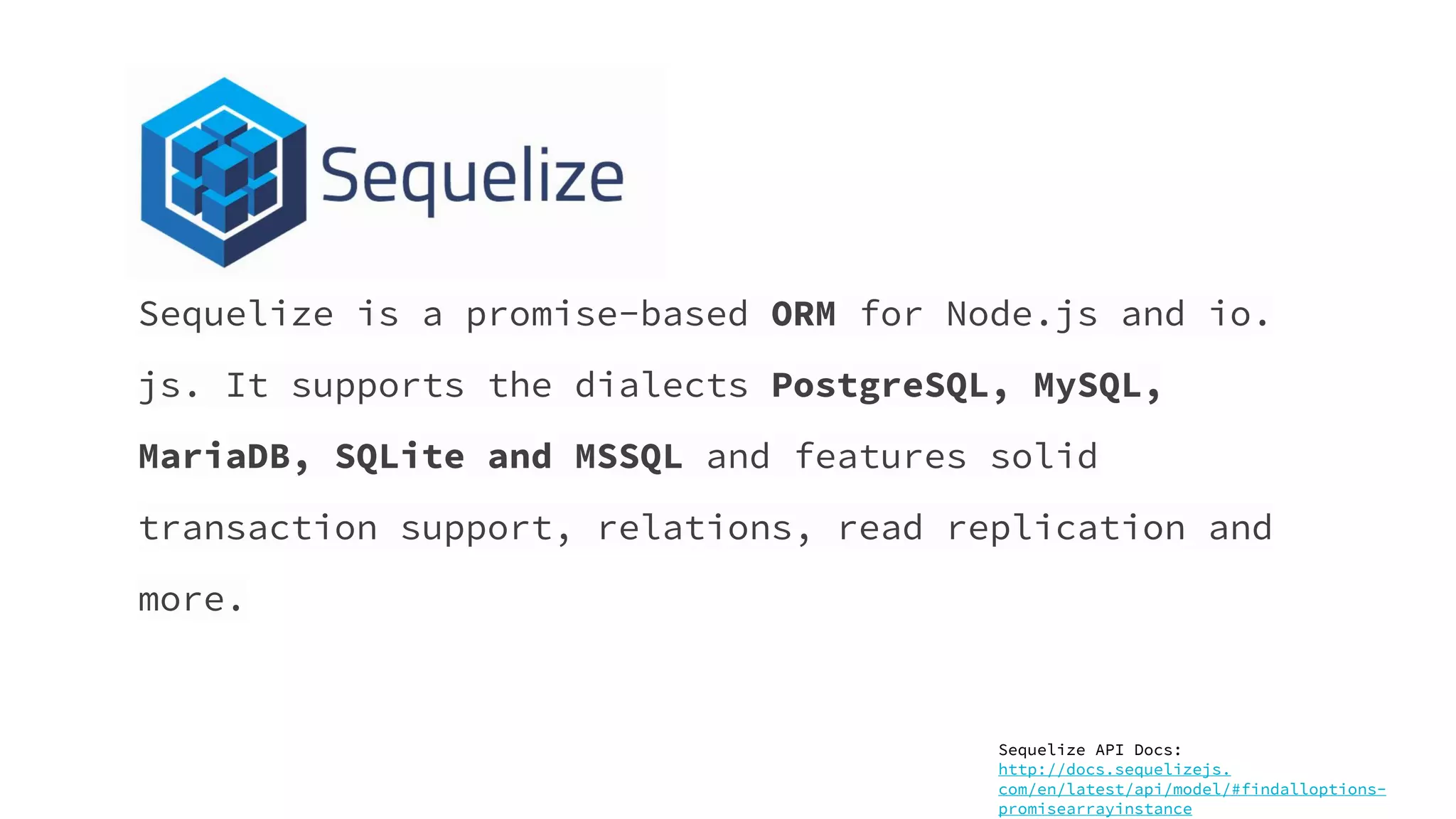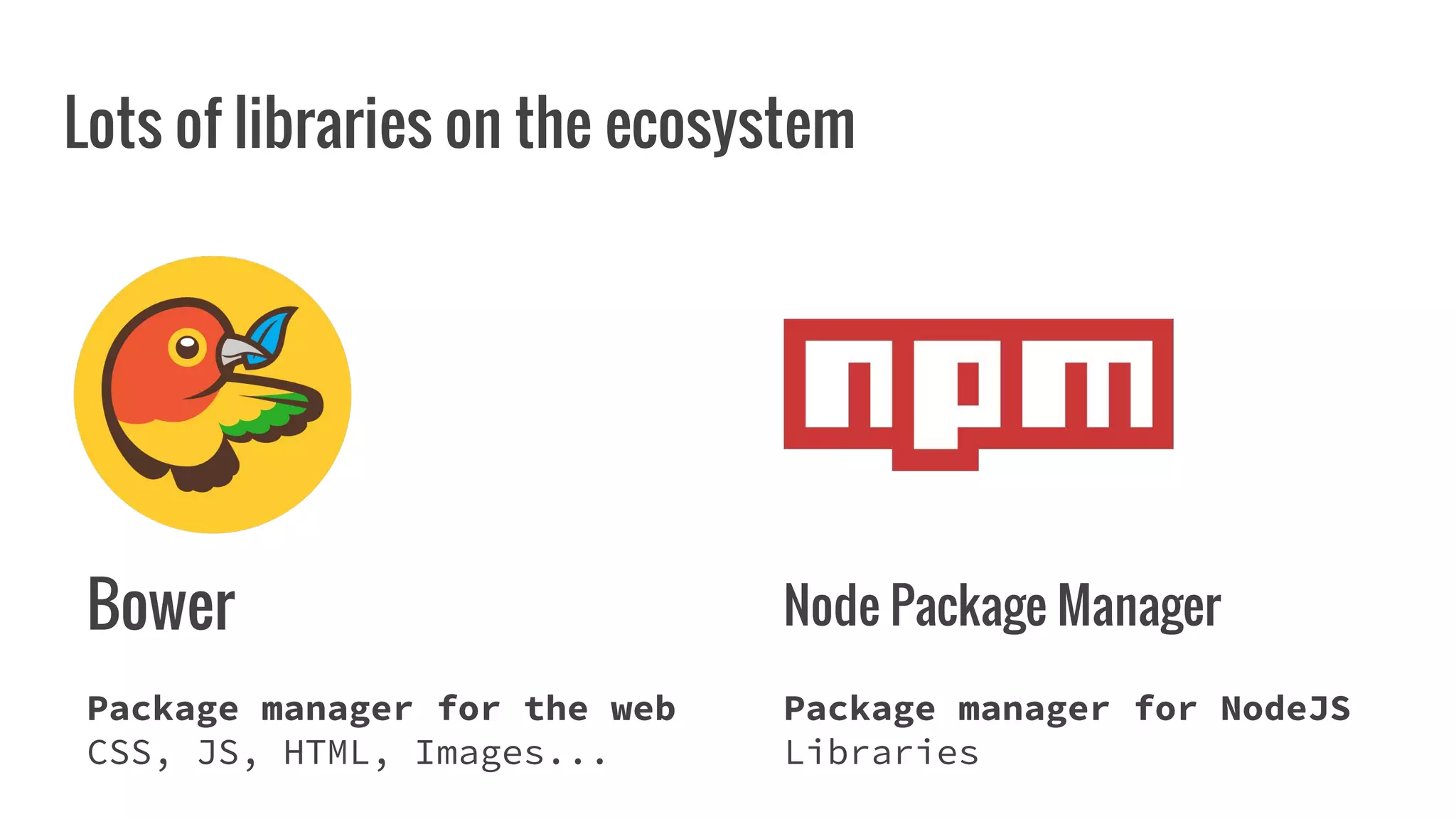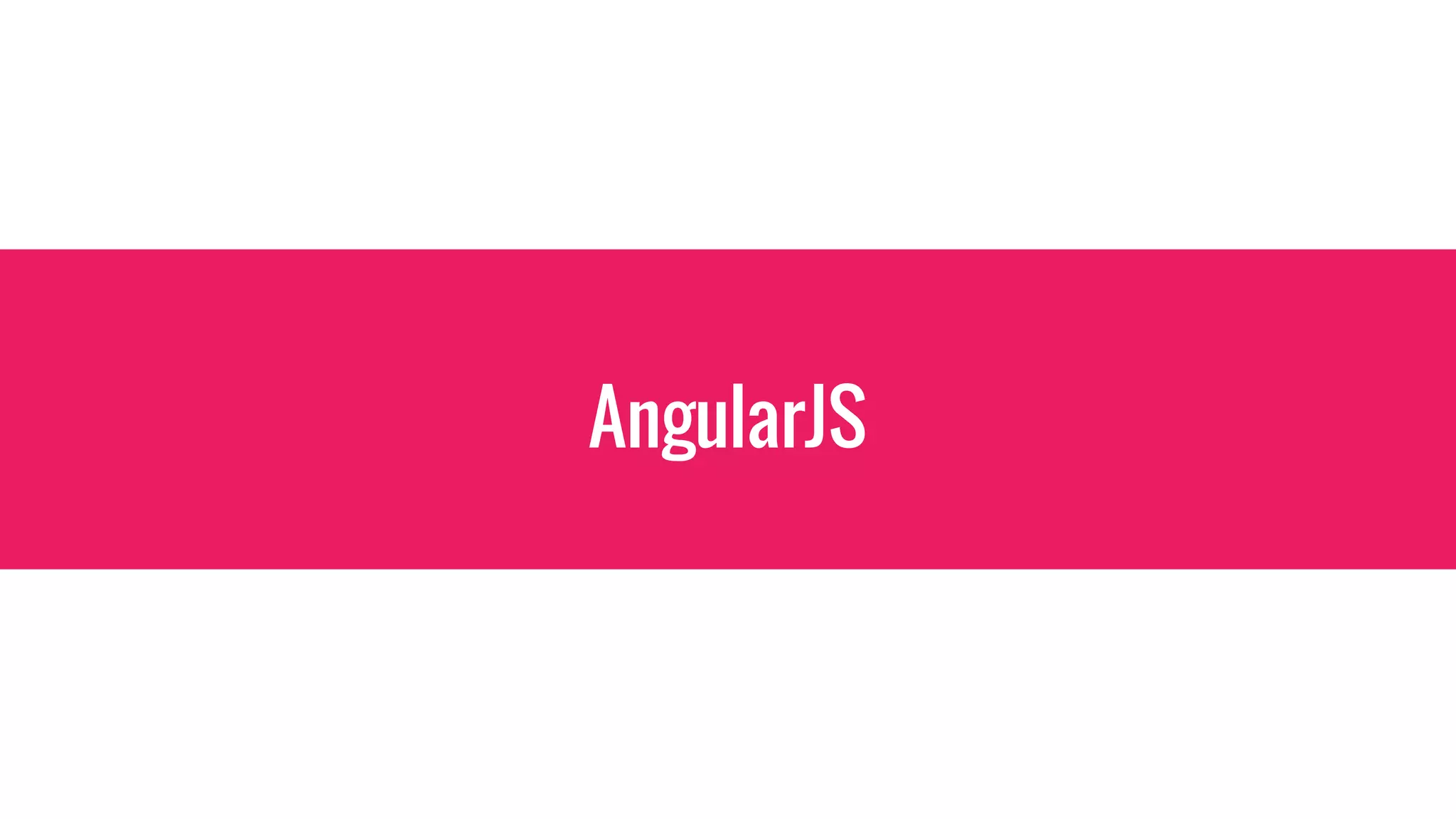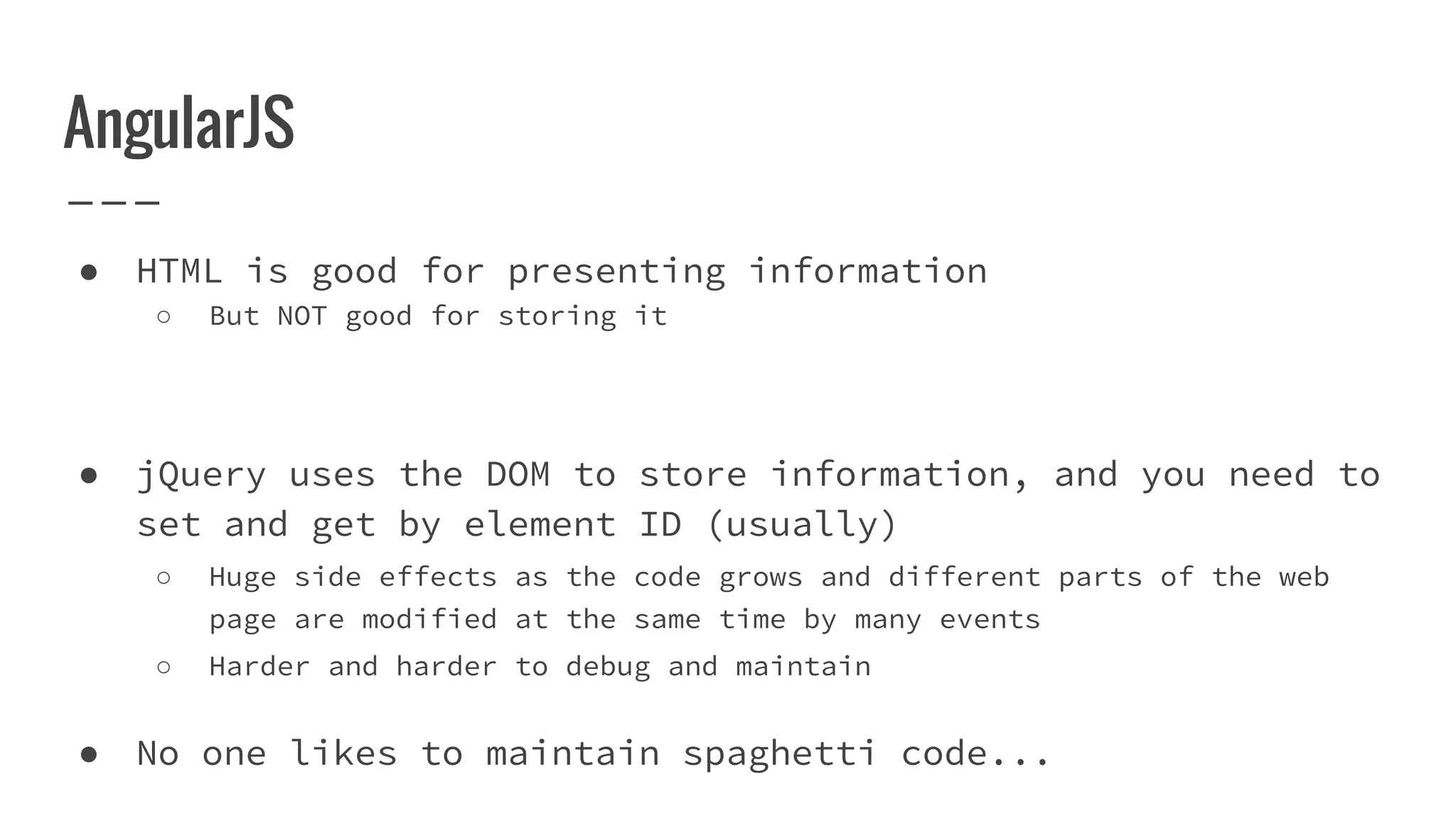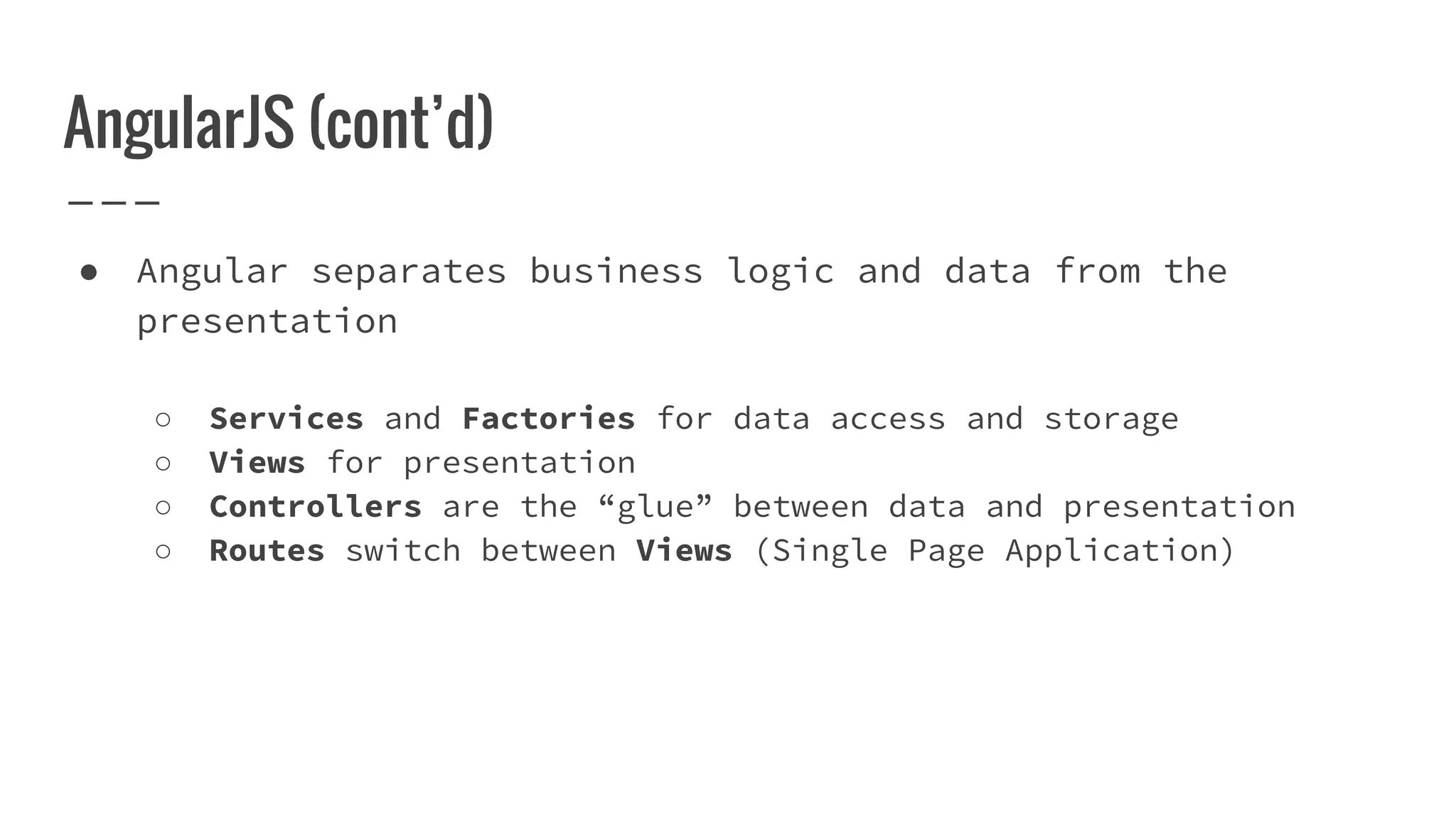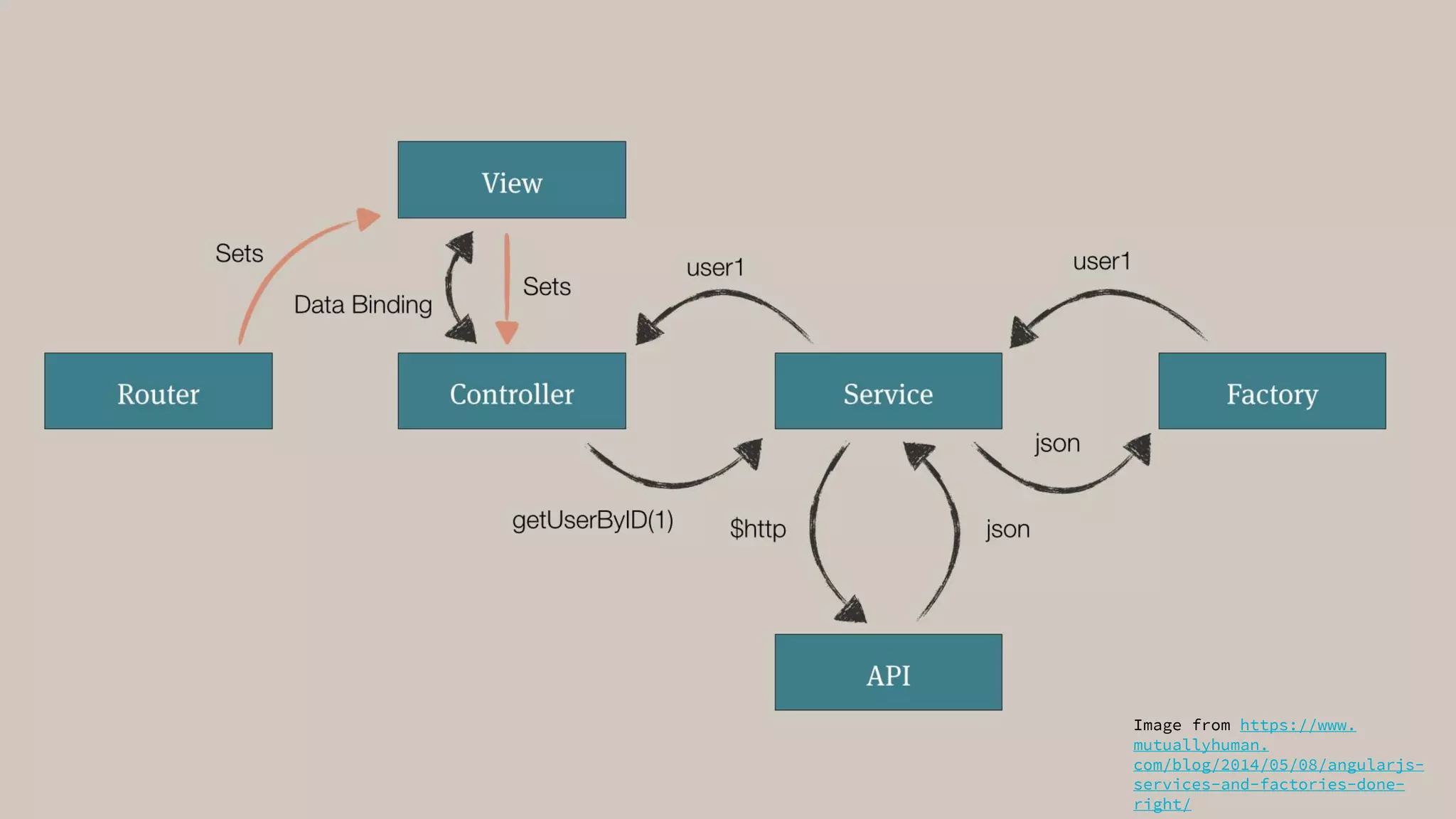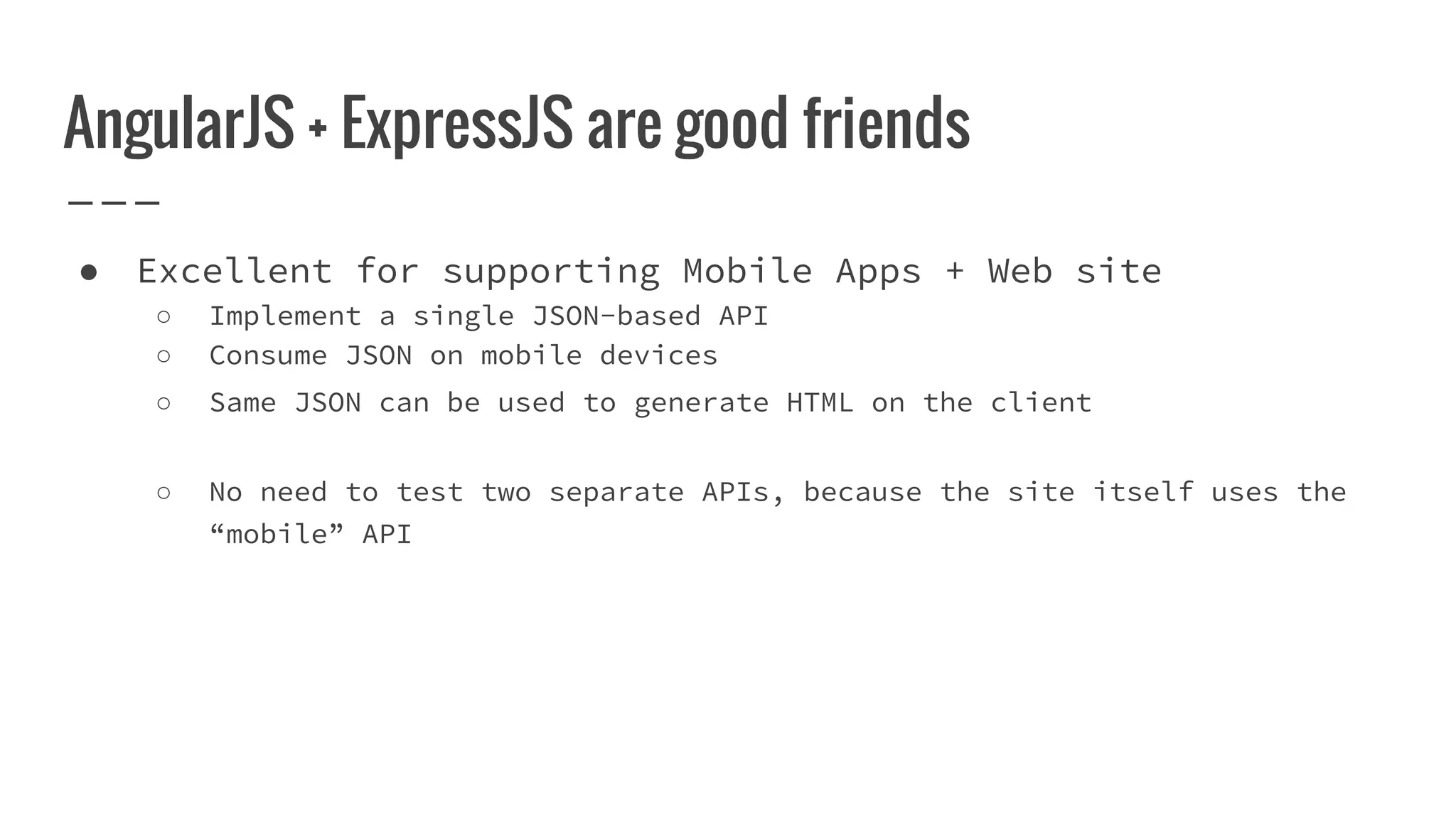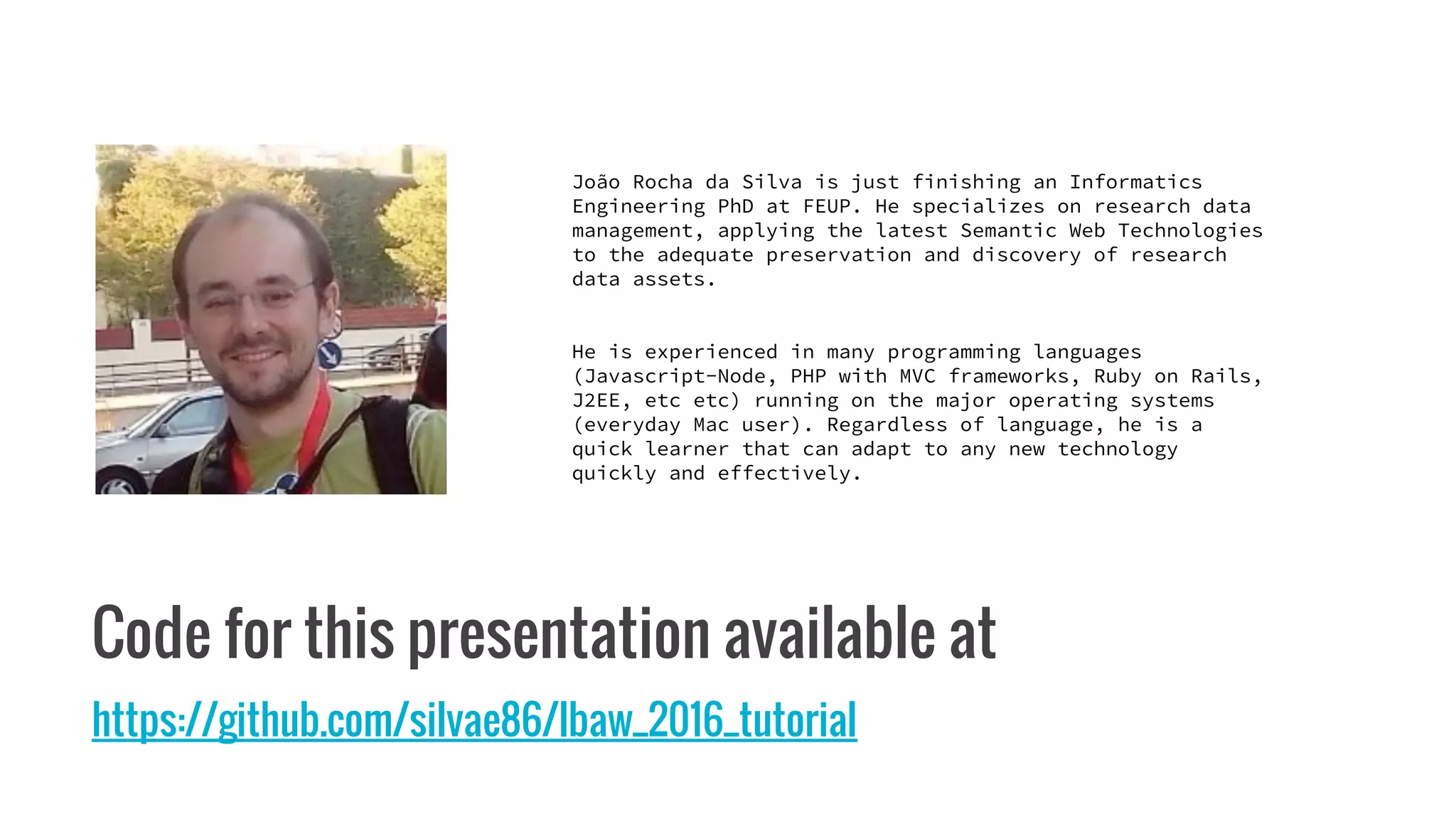The document provides an overview of the MEAN stack, which includes Node.js, Express.js, and AngularJS, highlighting their functionalities and advantages. It emphasizes Node.js as a high-performance JavaScript runtime that allows for asynchronous processing and low memory consumption, while Express.js serves as a framework for server-side applications and AngularJS facilitates client-side development. The document also touches on live coding sessions and showcases a collaborative approach to mobile and web application development using JSON APIs.
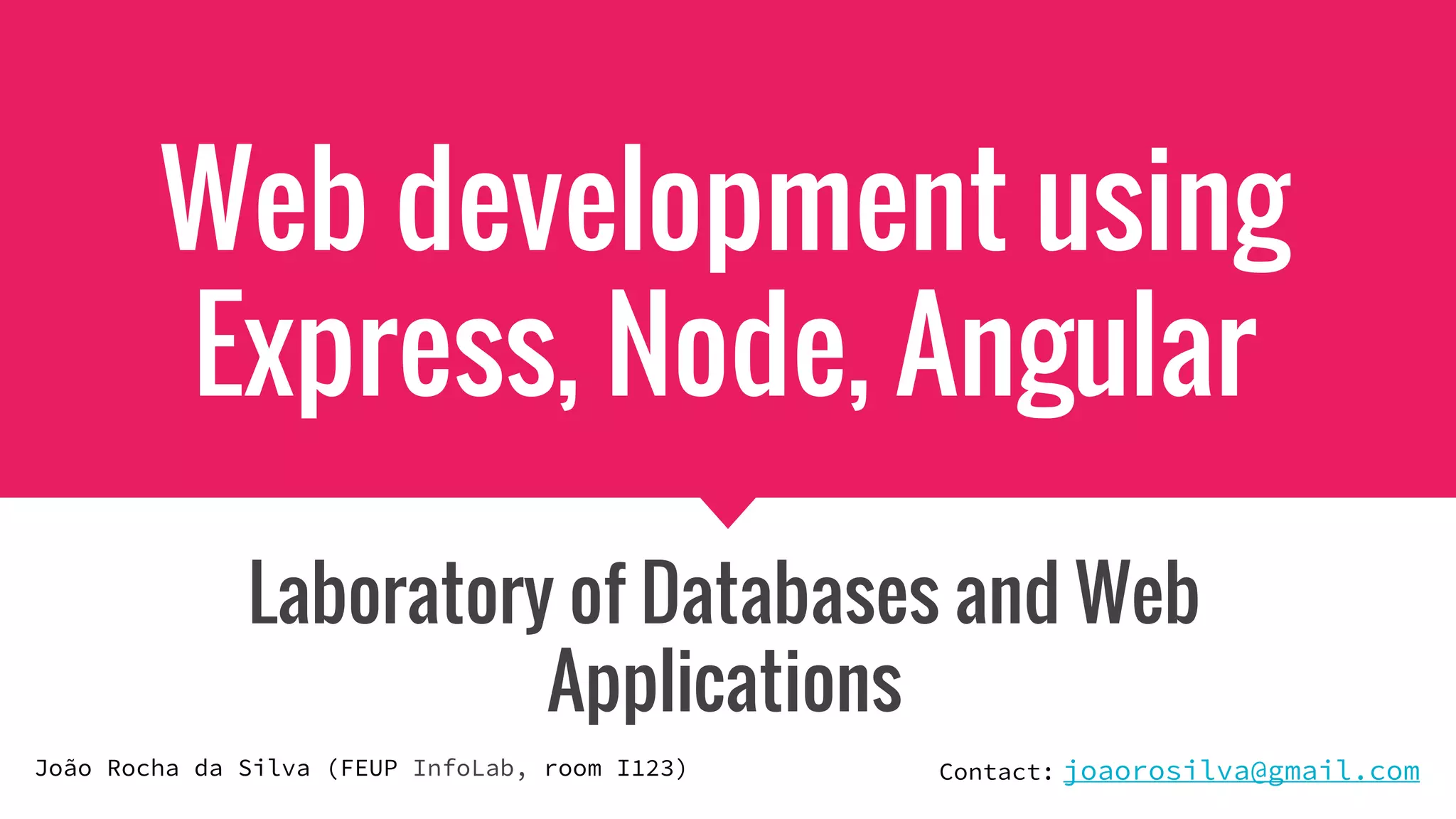
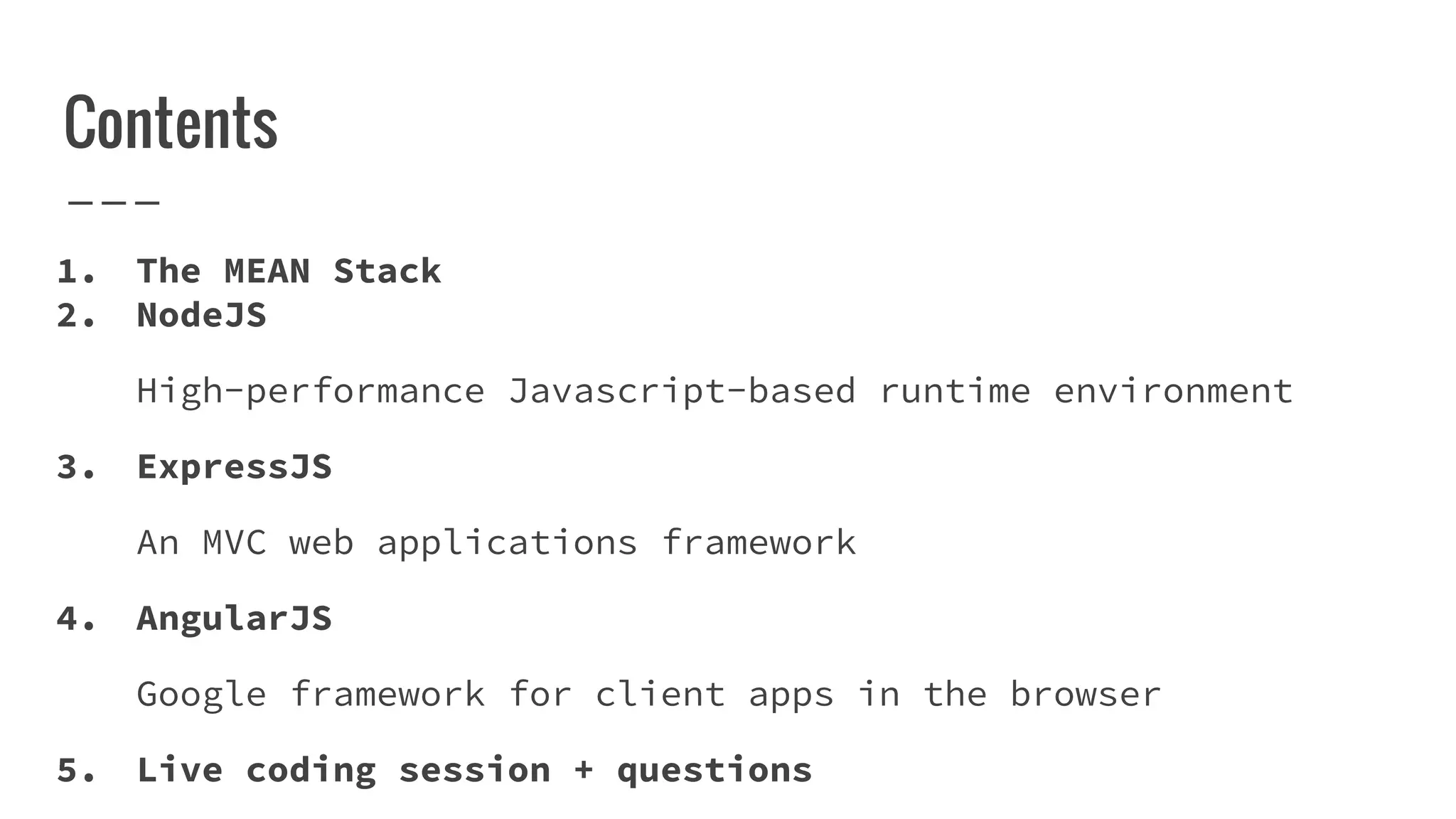

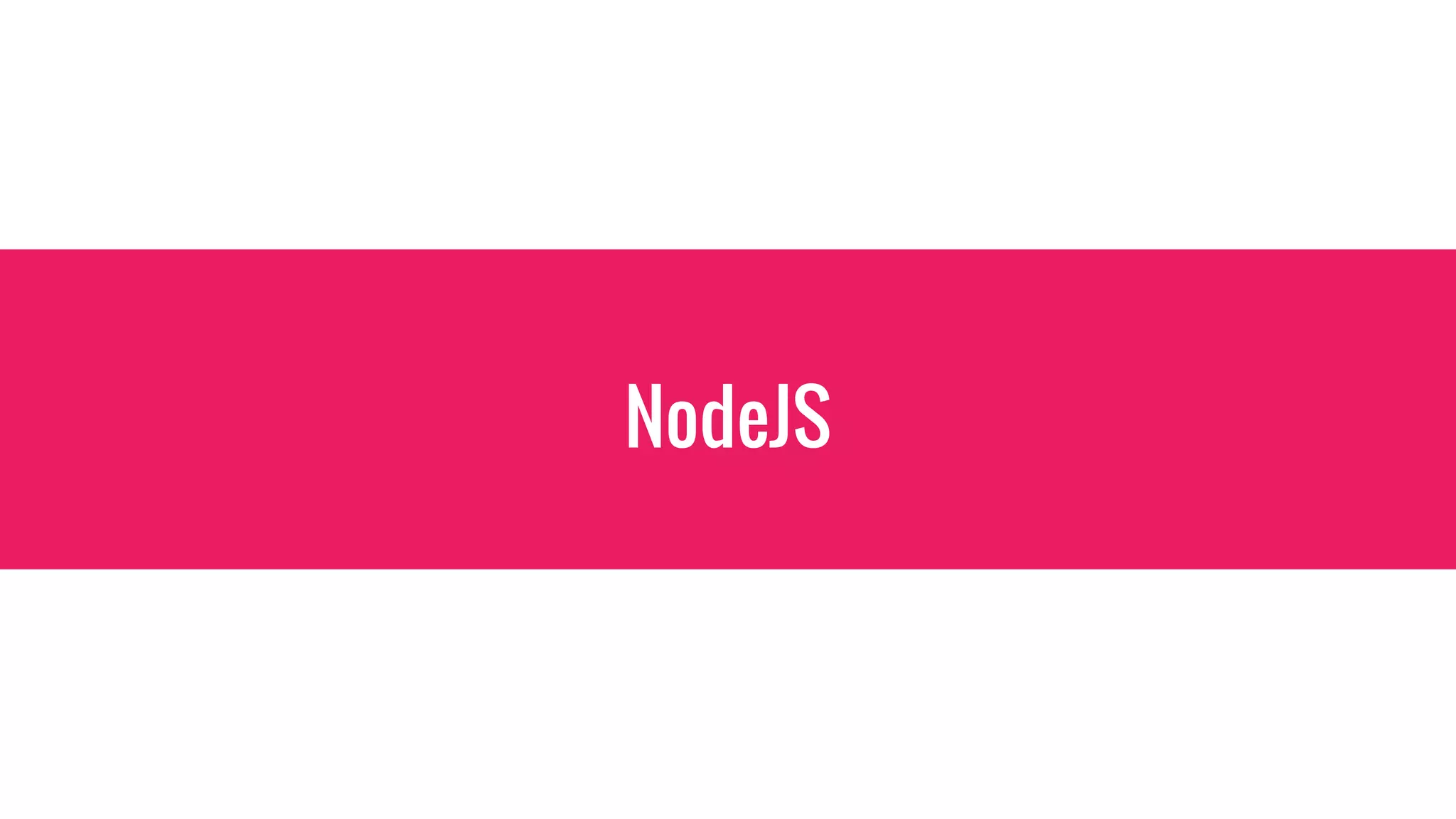
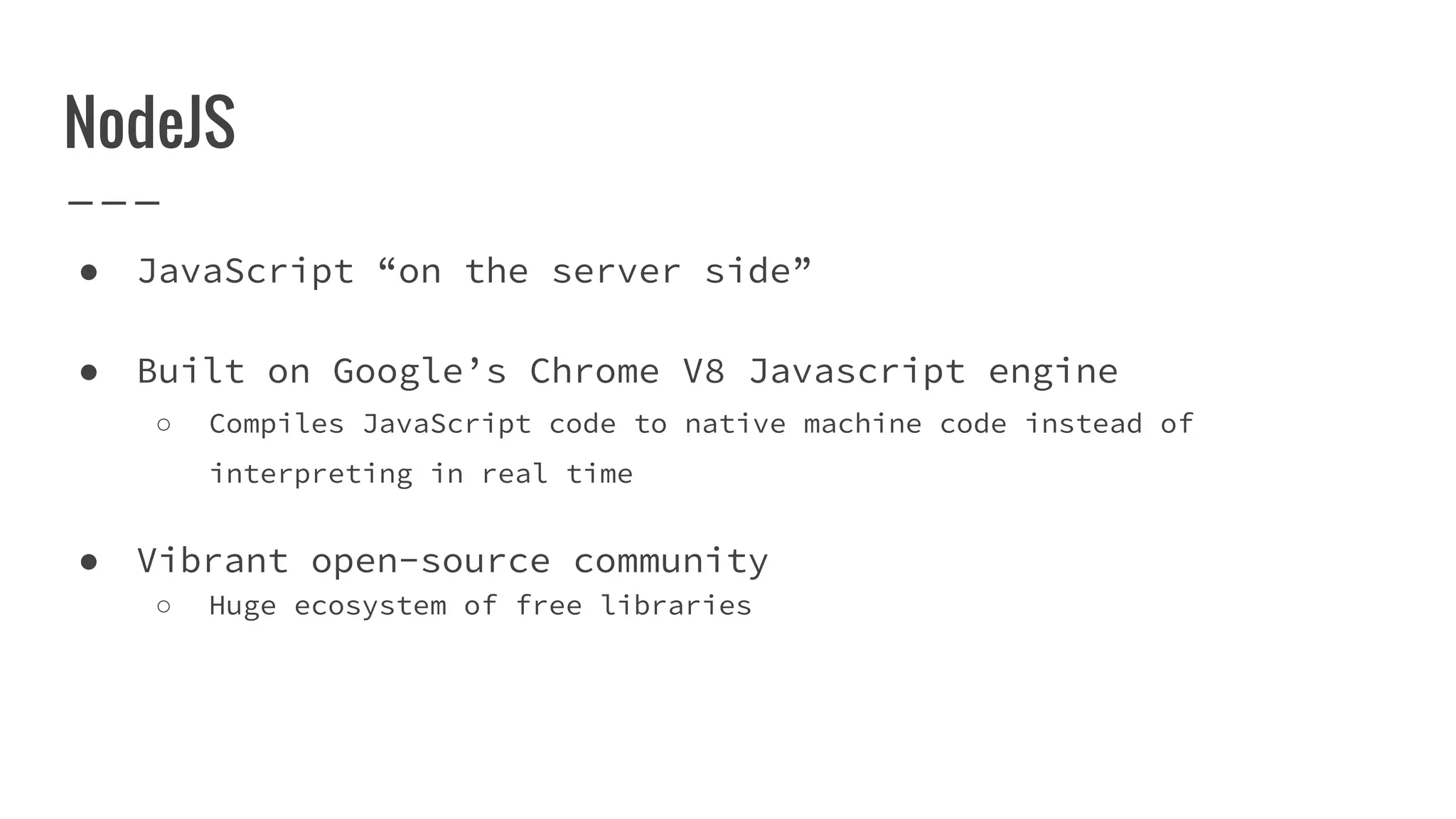
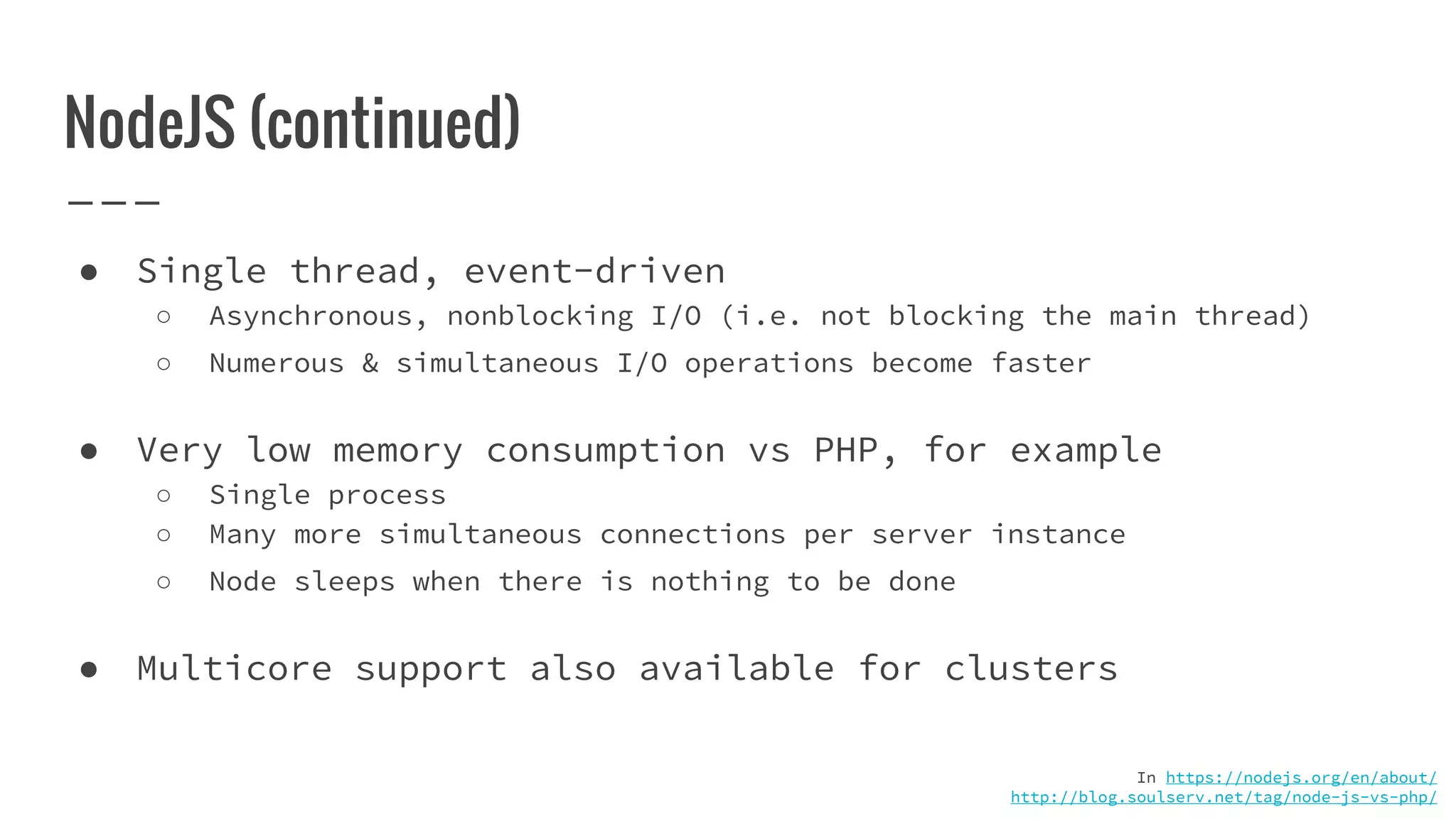
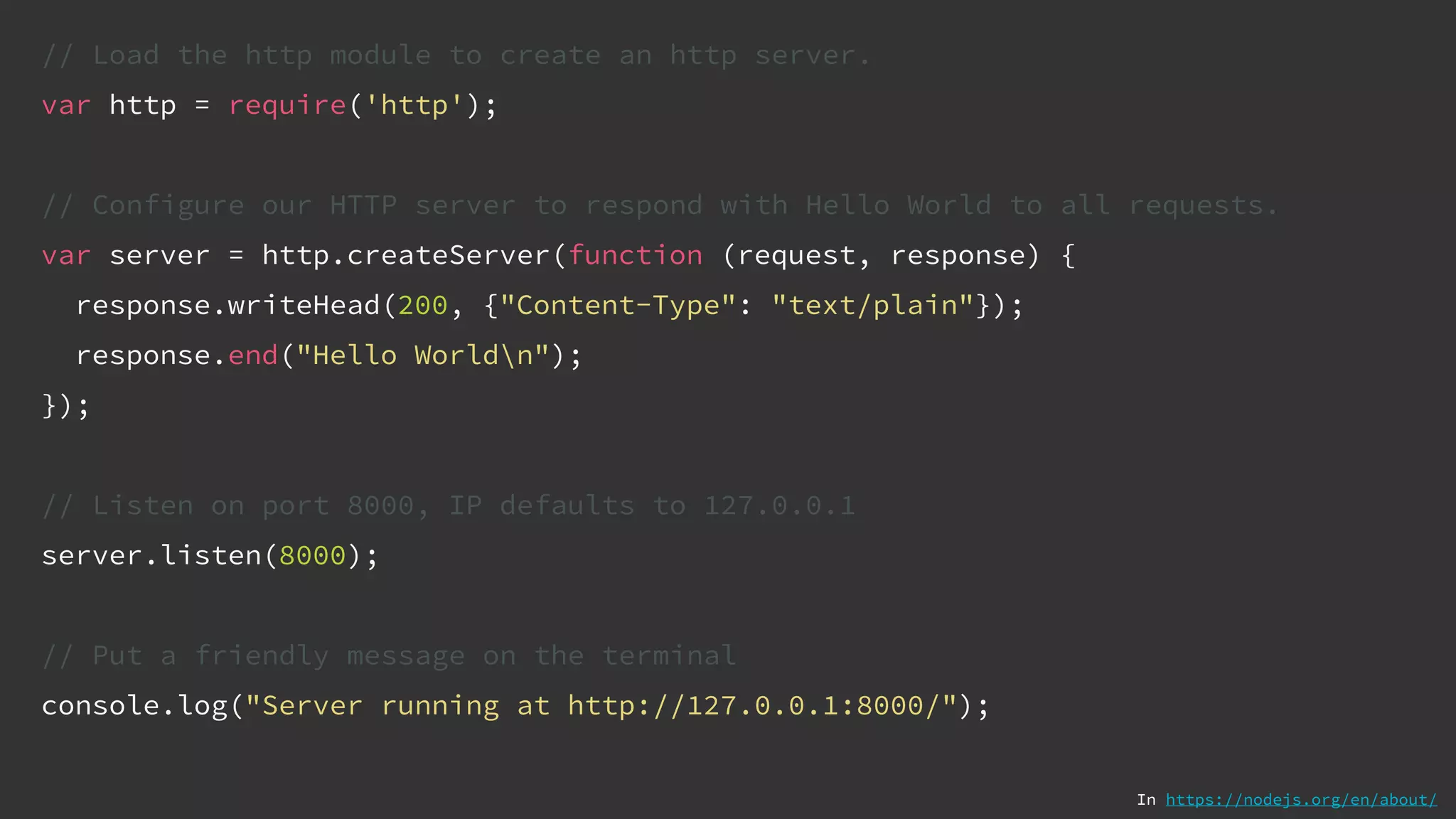

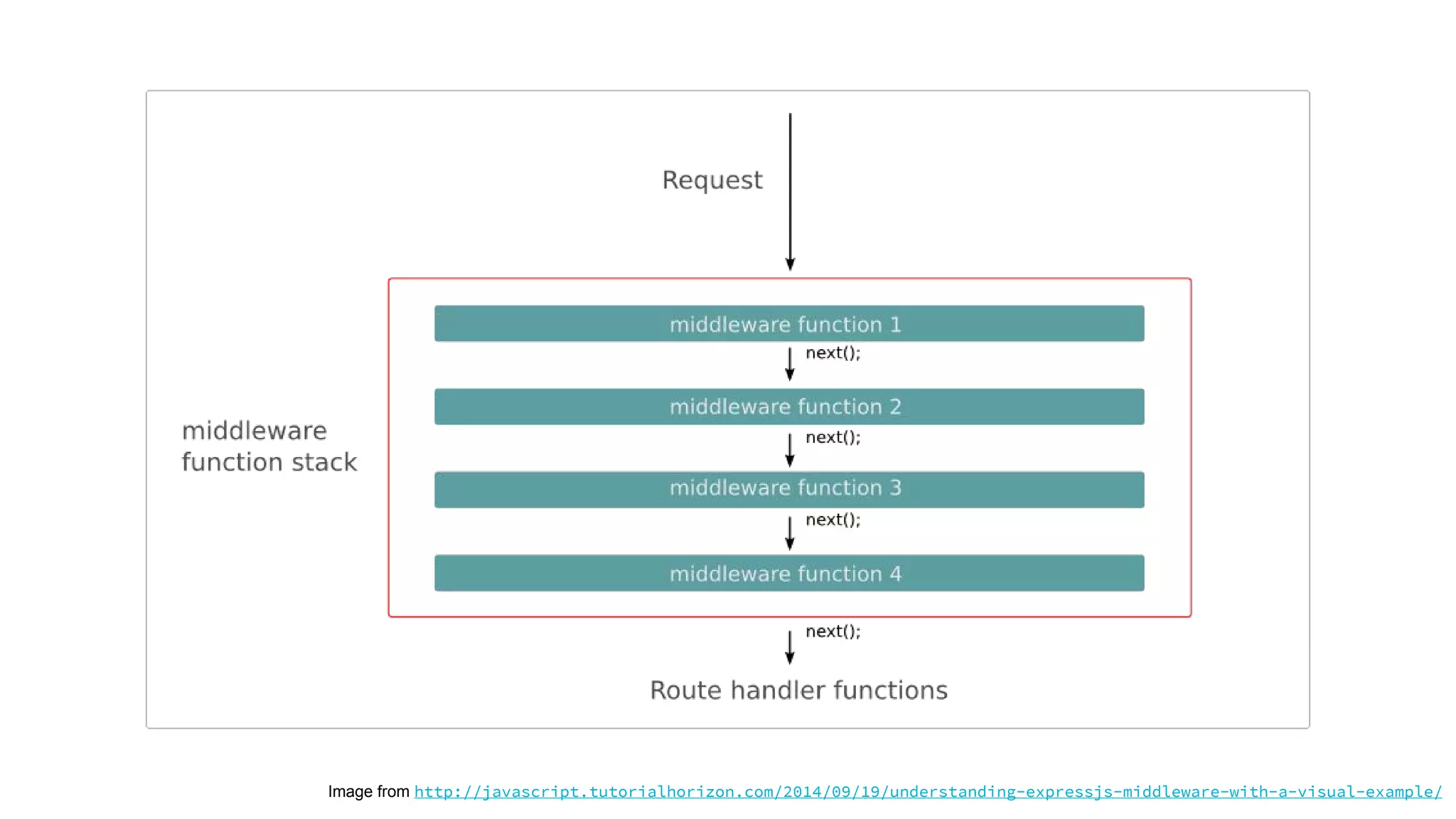
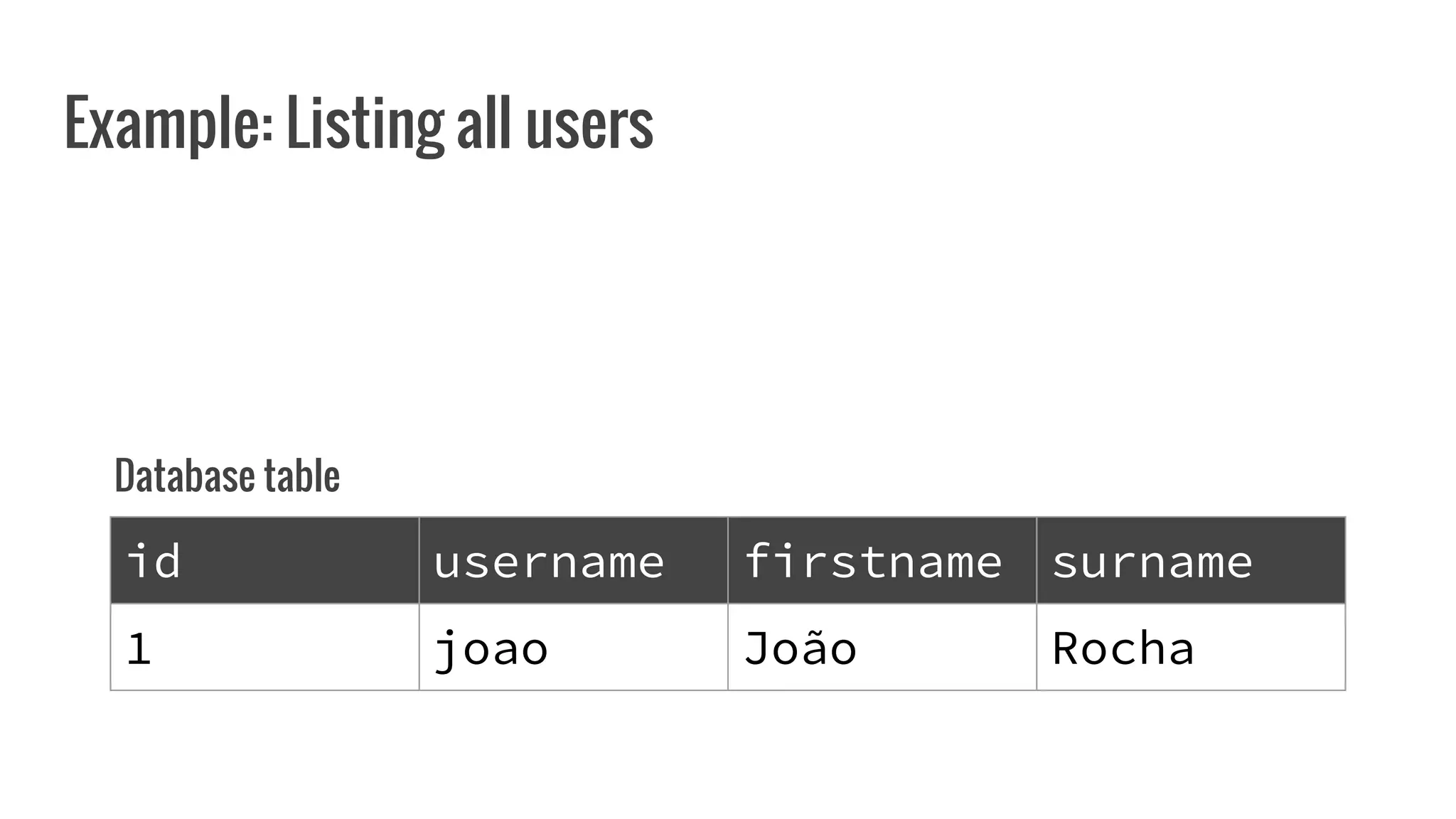
![Route (JS) GET /users/all -> function(req,res) { //1. Fetch from DB User.findAll( … //2. Render view res.render( ‘users/all’, { users : users } ); } [ { "id" : 1, "username" : "joao", "firstname" : "João", "surname" : "Rocha" } ] <html> <h1>Viewing users</h1> <% for (var user in users… ) { %> Username : <%=user. username%> First Name: <%=users.firstname%> <% } %> </html> Model Route View Client requests http://127.0.0.1:3000/users/all Return Object array](https://image.slidesharecdn.com/angularexpresslbaw2016-160429145718/75/Web-Development-with-AngularJS-NodeJS-and-ExpressJS-11-2048.jpg)
